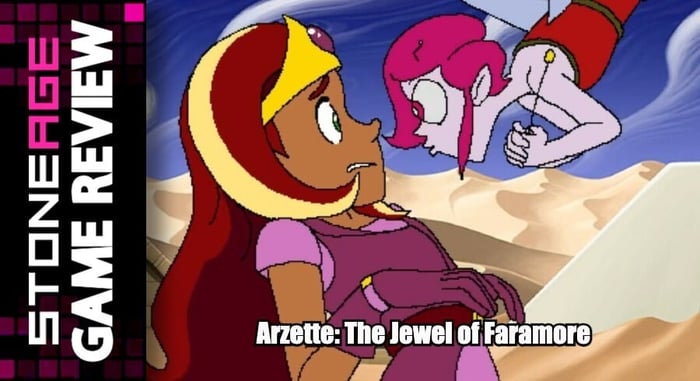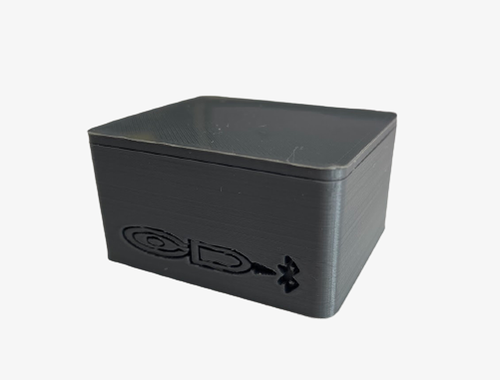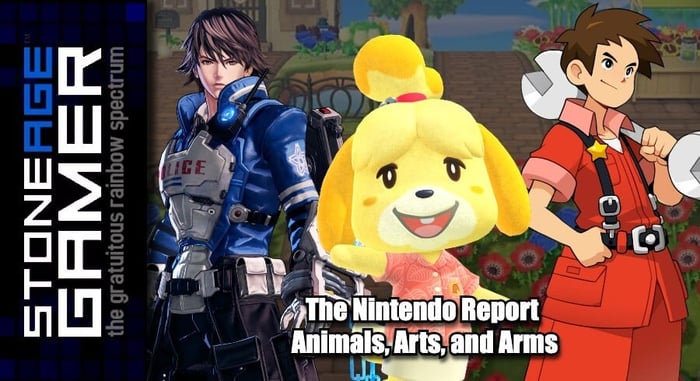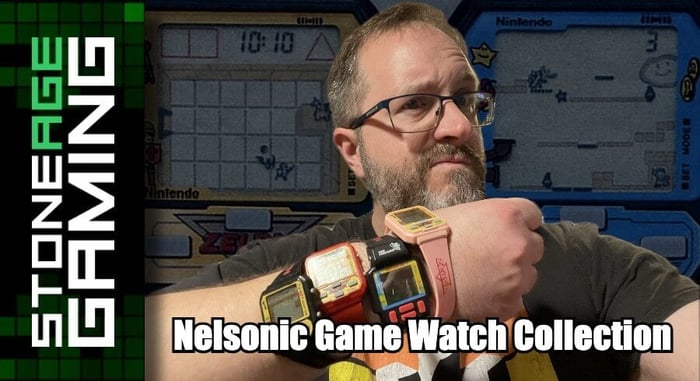
Stone Age Game Review: Arzette - The Jewel of Faramore
The Philips CD-i is a terribly misunderstood machine. Well, maybe that's overselling it a bit. That seems to imply that it’s a better system than it actually is. In all honesty, it’s not a very fun machine to play video games on. But there’s a certain mystique about it that’s hard to deny, at least for me. That’s why Arzette is such a fascinating game, and one that anyone who has ever had even a passing interest in the CD-i should play.
First, a little back story. As a kid, I was a huge fan of The Legend of Zelda. Still am, in fact! But I was absolutely in love with both Zelda and Zelda II on NES. So when A Link to the Past came out on Super NES, I was about as excited as a kid could have possibly been. It returned Zelda to the overhead style that the first game established, and it looked and sounded utterly amazing. But for as great as that game was, it didn’t change the way I felt about Zelda II, and the potential I saw in side-scrolling Zelda games.

I can’t say for sure when I first saw it, but at some point, presumably in 1993, an infomercial aired on Sunday mornings for the Philips CD-i. Now, if you aren’t an old person like me, that statement might not make a lot of sense, so allow me to explain. An infomercial is like a long-form commercial, and in the age before the internet, you watched what was on TV, not whatever you wanted to stream at any particular moment in time. Saturday mornings were dedicated to cartoons, but Sundays were a different animal. There were a lot of news shows and some live-action adventure shows, but all in all TV on Sunday mornings was geared toward adults more than kids. However, when running through the various cable channels available, sometimes you’d come across infomercials for all sorts of cool products. Usually they were kitchen-related, but not this one! It was an hour long ad for a futuristic cd-based system that could do it all. It played movies, music, came with an interactive encyclopedia, and it even played original video games! It’s hard to express just how crazy this all looked to me as a kid at that point in time. The things the CD-i can do must look positively hilarious to young people today, but to me, it was the future. It looked amazing, and I immediately started concocting plans to try and convince my parents to buy one for me. But at that point, it was just a cool thing I thought would be neat to have. About halfway through the infomercial though, it became an absolute need.
While showing off the games you could play on the CD-i, they eventually came around to Link: The Faces of Evil. It appeared to me that they were finally making a proper followup to Zelda II, and the only place to play it was on CD-i! It had animated cutscenes with voice overs that looked similar to the Zelda cartoon series, the music sounded incredible, and while the action looked a little stilted, I could only imagine that it played better than it looked. After all, Nintendo wouldn’t make a bad Zelda game, right?

As was probably the case with the vast majority of children, my parents never bought me a CD-i. Which was probably for the best since the system was kind of a mess. My local Electronics Boutique did carry the games though, and it was there that I learned that Link: The Faces of Evil wasn’t the only Nintendeo game on the system. There was Zelda: The Wand of Gamelon and Hotel Mario as well! For years and years, those games loomed large in my mind as these incredible lost masterpieces that nobody played because nobody had a CD-i. Magazines didn’t really spend much time covering CD-i back in those days either, so my imagination was really all I had to go on.
Fast forward a number of years and I finally got myself a CD-i, and tracked down the Zeld and Mario games. They were terrible. Well, the Zelda games were. Hotel Mario isn’t half bad if you have a decent controller to play it with. But for as flawed as those Zelda games were, they still held this very certain mystique. The whole system did. For a brief period of time, the specific sounds and visuals associated with computers of that era elicited a feeling of futurism that my Super NES couldn’t match. There’s just something about early CD-ROM technology that feels almost other-worldly. It was before people really started trying to push polygons and instead were fascinated by the prospect of full motion video sequences in their 2D games. It was a vision of a future that never really materialized, and it’s always been a source of fascination to me, and seemingly very few others.
The general consensus was that the CD-i was a dumpster fire of a system and the Zelda games in particular were nothing but the hottest of garbage. And look, I’m not here to tell you that those games are somehow hidden gems that are worth playing. They absolutely are not. But they aren’t completely devoid of good points as some would have you believe.
So naturally, when I saw Arzette, I couldn’t believe my eyes. Somebody actually took the time to make a game that answered the question, “what if the CD-i Zelda games were good?”

This isn’t just some surface level thing either. Arzette actually takes the gameplay ideas of the CD-i Zelda games and takes away all of the terrible control and quality of life issues that bogged them down so much, all while maintaining that specific look, feel, and sound that made those original games seem so cool in the first place.
The resulting game is a wild experience that will likely affect you very differently depending on whether or not you have any nostalgia for the CD-i and its bizarre library.
No matter what, this is at the very least a good game. Even if you don’t have any frame of reference for what it's a love letter to, Arzette is a fun and interesting exploratory action game that feels a lot like something out of the Wonder Boy series. It never reaches the highs of say, The Dragon’s Trap, but it is still a well designed, and fun experience. That said, there’s only so much polishing you can do this game’s specific formula without fundamentally changing what it is. This is honestly just about as good as this kind of game can actually be without evolving it beyond what I can only assume is its intent.

One of the biggest problems in the CD-i games comes in figuring out what you can and can’t walk on. The backgrounds are confusing, and it leaves the levels feeling like a bit of a mess to traverse. This was compounded by the game's frankly atrocious control scheme. You had to press up to jump, and chances are you were having to do this on one of the CD-i’s abysmal controller options instead of something that actually resembled a video game controller. Arzette fixes the controls completely by making them both perfectly responsive and more traditional, and does a magnificent job of making sure the player can easily tell what they can walk on and what’s just a part of the background.
This also extends to the game’s combat. The original games’ combat was clunky at best, with little to no invincibility frames after taking damage, so enemies could almost instantly kill you if you slipped up even a little. Arzette fixes all of that too. The boss battles though, are a different story. They’re an improvement on the original games for sure, but by trying to adhere to their simplistic nature they tend to come off as very underwhelming, especially the final boss.

Another issue I ran into involves the character interactions, though not in the way you might think. Arzette is a surprisingly earnest send up of the CD-i games. It would have been incredibly easy to simply make fun of the originals, but Arzette doesn’t do that. Yes, there are some characters that are so over the top that even Arzette herself reacts to them with appropriate levels of being weirded out, but for the most part, everything is played pretty straight, and it’s honestly wonderful. Those interactions in the CD-i Zelda games were nuts, but they were so interesting and creative it was hard to be mad at them, at least for me. The problem in Arzette though, is that some of these interactions are easy to miss. There were several instances during my playtime where I had found an item before meeting the character I needed to give it to, and then when I finally did find said character, they just moved right along to the point of me giving them the item as if I had already met them before. It would have been nice to have the game default to always showing the characters first interaction first so I didn't feel quite so much like I was missing context. The writing in this game is really fun, and I hated missing out.
But aside from some backtracking feeling a bit tedious and underwhelming boss battles, Arzette was an absolute joy to play, especially for someone who remembers what it felt like to see the CD-i and think it looked like something from another world. The creators of this game went so far above and beyond in nailing the feel of Arzette that it’s hard to believe. There are artists and voice actors returning from the CD-i era, but it goes a step beyond that. The sound effects in particular are absolutely spot on. The sound of combat and picking up items is exactly the same as in Faces of Evil. There’s a minigame that’s based on Hotel Mario and all the sound effects are again 100% accurate to the original. The cutscenes are pixelated in the exact same way as the CD-i games, and they even bend and zoom in the same unsettling ways the old games did. Heck, the Seedy Eye Software logo in the beginning mimics the Philips CD-i logo animation with such shocking accuracy it’s a wonder they didn’t get sued!

Here’s the part where I get to humble brag a little. Not only was I absolutely thrilled to get the chance to play this game early for review, but Limited Run (the game’s publisher) was kind enough to send me a press kit and it’s marvelous. I hope to have a video of the thing up on our YouTube channel early next week, but the thing I wanted to touch on most was this absurd controller.
These lunatics actually went ahead and recreated one of the worst controllers of all time to actually function with the Nintendo Switch. I say “one of” because my actual CD-i controller is, in my humble opinion, way worse than this thing, but seriously look at it! It’s bonkers!

What’s more, in Arzette’s options menu, you can actually play through the game with classic controls, which means pressing up to jump. So if you wanted to punish yourself for some reason, you could actually make Arzette play like garbage to recreate the “authentic” experience.
And yes, this controller works on other games too! It registers as a Pro Controller, so any game that doesn't require the use of an analog stick is completely playable with this abomination. I tried playing Super Mario bros on NSO with it and it was, well, certainly a trip. You can buy this controller on Limited Run’s site, and if you want a pretty pink version, that comes in the completely insane Collector’s Edition that I wish I had the disposable income to buy.

So what’s the bottom line here? Arzette is a very good game. If you have no nostalgia for this kind of thing, it’s going to fall well short of the best in the genre. This isn’t Hollow Knight or Metroid Dread. But just because a game isn’t necessarily a 10/10 experience, doesn’t mean it isn’t worth playing. The game is fun, and if I had to give a score, I’d put it in the mid 7 range, which constitutes as very good in my book.
However, if you’re like me and you think the CD-i is neat, or you’re someone who has always looked at those CD-i Zelda games with something other than contempt, go ahead and up the score to at least an 8/10. It’s such a wonderful love letter to a kind of game that never got the chance to figure itself out. I personally couldn’t be happier that Arzette exists, and I hope to see more from her and her wacky friends in the future.
All-In-One Bluetooth Controller Adapter for CD-i

$49.99
From the manufacturer: We are fans of the Philips CD-i system who aim to keep the platform alive and usable using custom designed hardware. While...… read more





